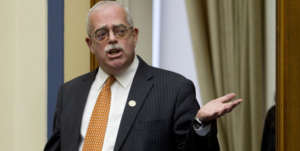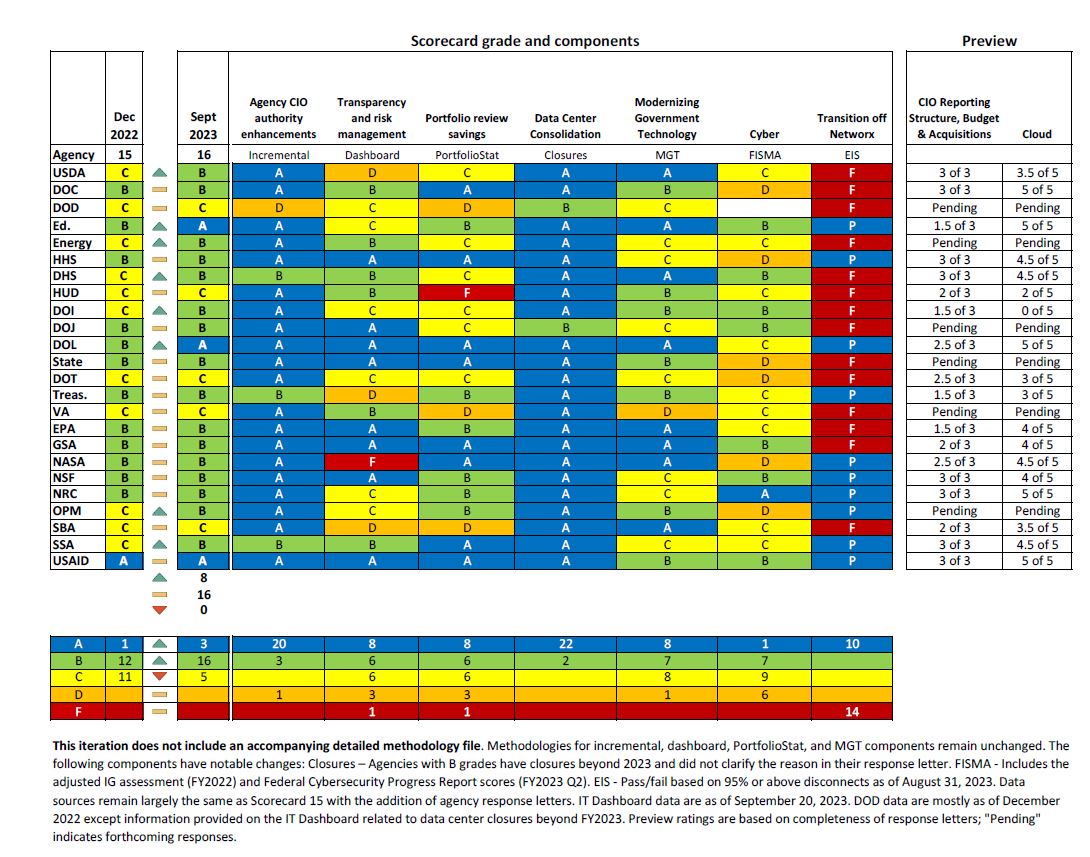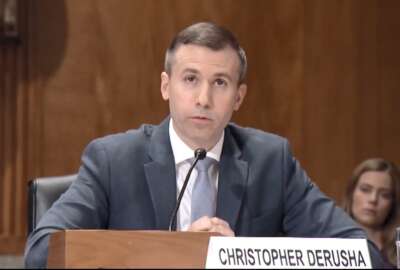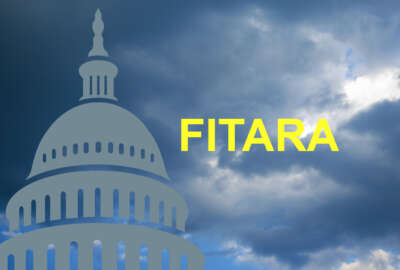Connolly runs out of patience waiting for Republicans to get on FITARA bus
The 16th version of the Federal IT Acquisition Reform Act (FITARA) scorecard from Congressman Gerry Connolly (D-Va.) revealed two new pilot categories measuring the...
Congressman Gerry Connolly couldn’t wait any longer for the Republican majority to jump on the FITARA bandwagon.
The Virginia Democrat and ranking member of the House Oversight and Accountability Subcommittee on cybersecurity, IT and innovation handed out grades under the 16th iteration of the Federal IT Acquisition Reform Act (FITARA) scorecard today with agencies earning 3 “As”, 16 “Bs” and 5 “Cs.”
Connolly is holding a FITARA roundtable this afternoon on Capitol Hill featuring testimony from the Government Accountability Office, the General Services Administration, the Social Security Administration and the departments of State, Veterans Affairs and Commerce.

It’s not a hearing, however, as Rep. Nancy Mace (R-S.C.), the chairwoman of the subcommittee, didn’t schedule one, even though she’s been privately and publicly supportive of FITARA.
Connolly pushed Mace during a June subcommittee hearing on cutting edge technology to hold the FITARA 16 hearing.
“I want to remind the [chairwoman] that our first discussion about the future course of this subcommittee was in February in Munich. The chairwoman indicated to me she had 17 hearings planned, and I indicated I would be supportive. However, we wanted to continue to do the bread and butter that we have done on the subcommittee with respect to FITARA, and the modernization of IT and the federal government,” he said. “We made an agreement about having a hearing; it is now June, almost July. We have always had, in eight years since we passed the FITARA on a bipartisan basis, two hearings a year on the implementation of the FITARA. We created a scorecard. And according to GAO, that scorecard has helped save $25 billion. There are not many programs or pieces of legislation in federal history that saves money, let alone $25 billion. I’m always open to updating and modernizing tools we have to measure progress. Well, what I’m not open to is not having the oversight hearing at all. And I hope the chairwoman and I can work it out for the sake of harmony on the subcommittee. I have worked with [Republican Congressmen and chairman/ranking members] Darryl Issa, Mark Meadows, Trey Gowdy and Jody Hice throughout the years on a bipartisan basis on the subject matter, and on specifically those hearings on that scorecard. So I look forward to working with the chairwoman and having offline discussions. But I want to make it very clear, waiting until December to have that hearing is not something acceptable to this side of the aisle.”
Mace did not respond to Connolly’s comments at that June hearing. An email to Mace’s staff about the release of FITARA 16 was not immediately returned.
So instead of waiting two-plus more months, Connolly collected agency feedback in August through a letter, asking about 13 questions and another 20 subquestions and comparing those answers with FITARA 15 data to come up with the new scorecard grades.
In the letter to agencies, which Federal News Network obtained, Connolly asked for updates or changes in agency progress against three of the FITARA categories: CIO authorities, data center consolidation and cloud capabilities, and the use of a working capital fund under the Modernizing Government Technology (MGT) Act.
Sources familiar with the FITARA scorecard and grading process questioned Connolly’s approach, saying it was too subjective based on answers to open ended questions versus publicly available data. The source, who requested anonymity in order to talk candidly about the scorecard, said it’s fine to debate the approach and grading criteria based on public and transparent data, but agencies are being graded now on whether Connolly or his staff thinks their response to his letters are sufficient enough.
What the data and answers to the letter did show was that the departments of Education and Labor and the U.S. Agency for International Development received “A” grades. This was the first time since December 2019 that three agencies received the top scores.

This was the second straight scorecard where no agency received a “D” or lower grade, including the Department of Defense, which earned a “C” grade.
Connolly has been pushing DoD to pay closer attention to FITARA over the last few years. He said at the July Defense Travel System hearing that he remained concerned about DoD’s efforts to implement IT reforms under FITARA.
“As a reminder, these grades are not scarlet letters, but I do hope they emphasize the need for agencies to take IT modernization seriously and implement the necessary changes to improve their systems,” Connolly said. “Furthermore, DoD must meet its mission to protect national security without sacrificing common-sense good governance practices. DoD must justify the exemptions they want to retain through demonstrated responsible outcomes.”
DoD was one of six agencies to receive a “pending” rating on the two new oversight categories: CIO reporting structure, budget and acquisition; and cloud.
“Today, of the 24 agencies assessed on the FITARA Scorecard, 16 agency CIOs have a direct reporting relationship and eight have a partially-direct reporting relationship. In light of this progress, staff from the previous subcommittee undertook a series of discussions with a variety of stakeholders to assess the value of expanding the reporting relationship category to include questions related to CIOs’ IT procurement, acquisition and spending authorities. Additionally, the Government Accountability Office’s testimony at the prior subcommittee’s December 2022 FITARA 15.0 hearing included a request for the Office of Management and Budget to ‘provide additional guidance related to CIO authorities relative to the IT workforce, as well as [provide] a complete definition of the authority that CIOs should have relative to the IT spend,’” Connolly wrote in his August letter to agencies. “Scorecard 15.0 evolved its metrics to focus on grading how agencies justify their current data center posture, rather than continue to focus exclusively on closing more data centers. Moving forward, the minority would like to expand its focus to include agencies’ adoption and implementation of federal cloud computing strategies.”
In these two new pilot categories, agencies received ratings out of three for CIO reporting and five for cloud based on the questions asked in the letter.
For example, under CIO reporting, Connolly asked if the agency’s CIO has authority over IT procurement and acquisition and over IT spending.
Under cloud, the questions Connolly asked included whether agencies are using the application rationalization playbook, if they have been reducing the number of applications they are using and, if so, how many applications have been through the rationalization process.
Agencies also showed considerable progress under the transition to the Enterprise Infrastructure Solutions contract. This was a new category under FITARA 15 where only five agencies received passing grades. In this latest scorecard, 10 agencies received passing grades, which is based on disconnecting at least 95% of their legacy Networx circuits as of Aug. 31.
Copyright © 2025 Federal News Network. All rights reserved. This website is not intended for users located within the European Economic Area.
Jason Miller is executive editor of Federal News Network and directs news coverage on the people, policy and programs of the federal government.
Follow @jmillerWFED







